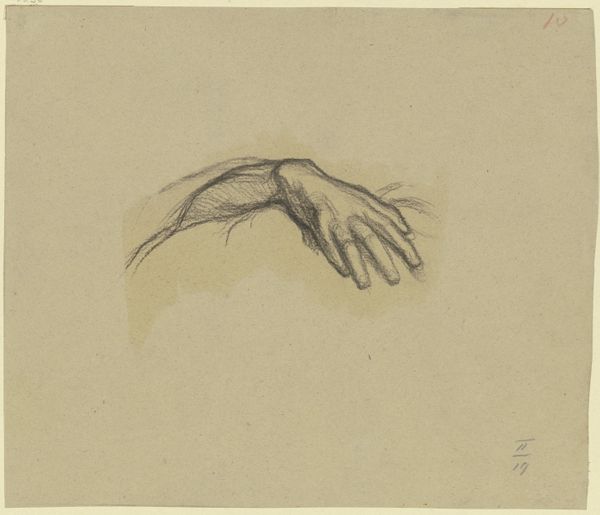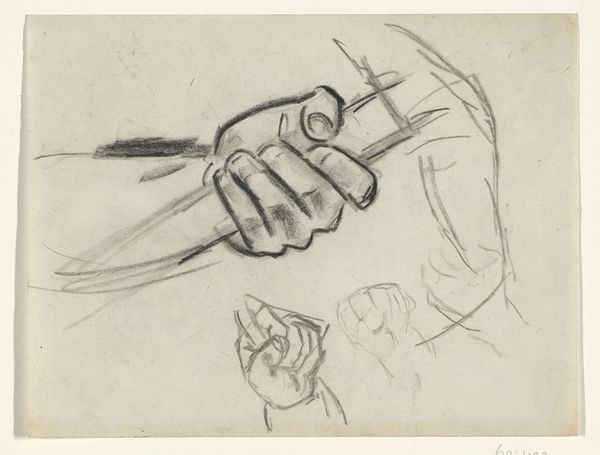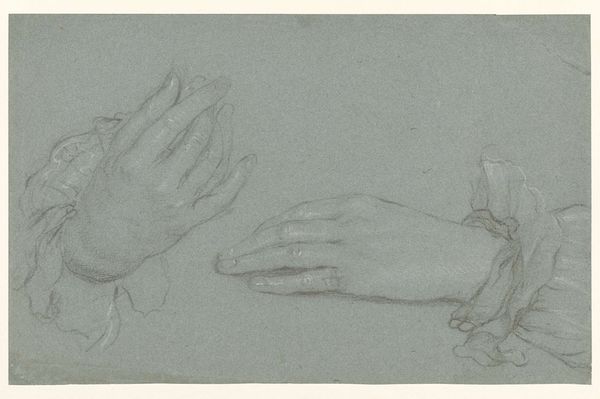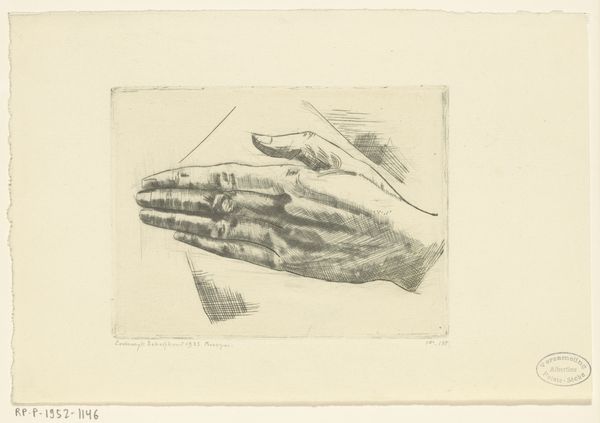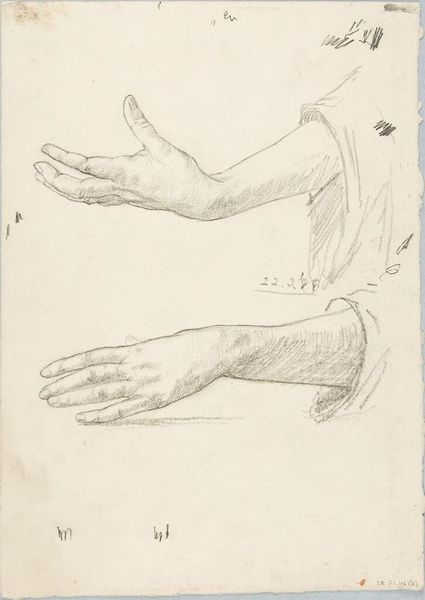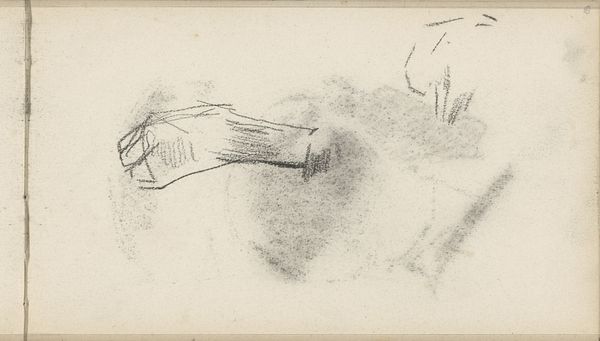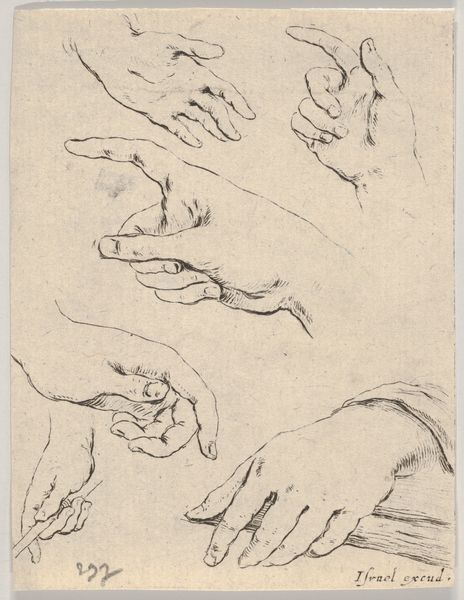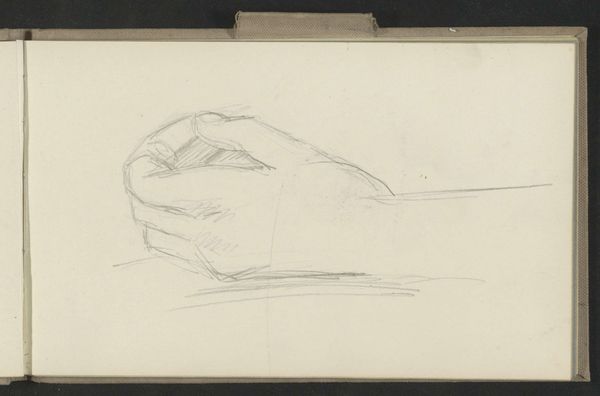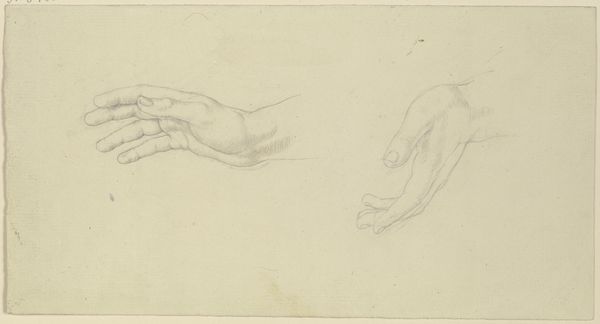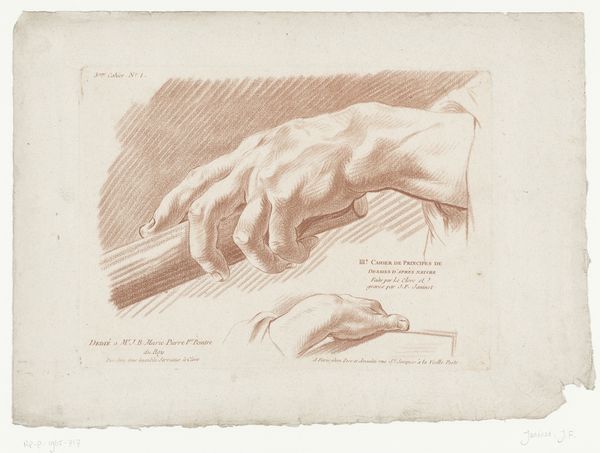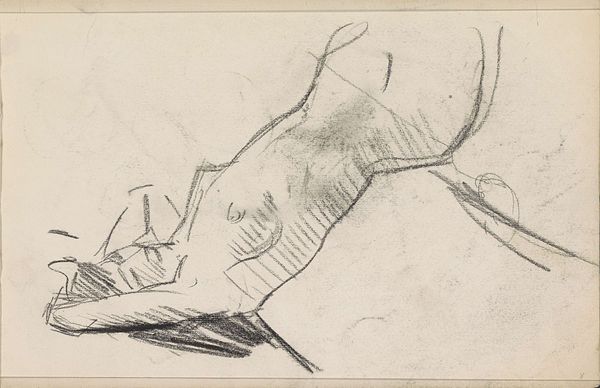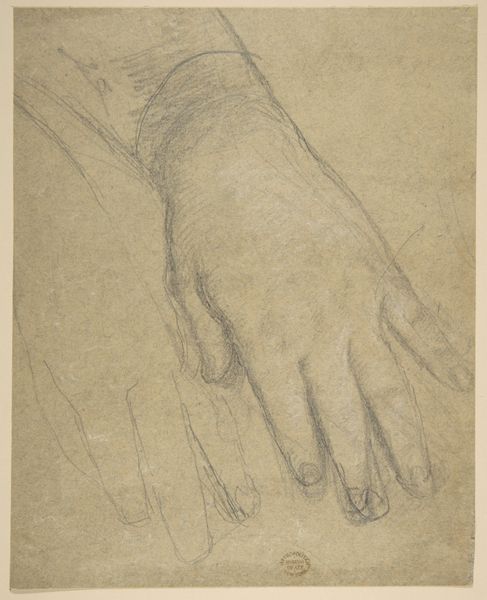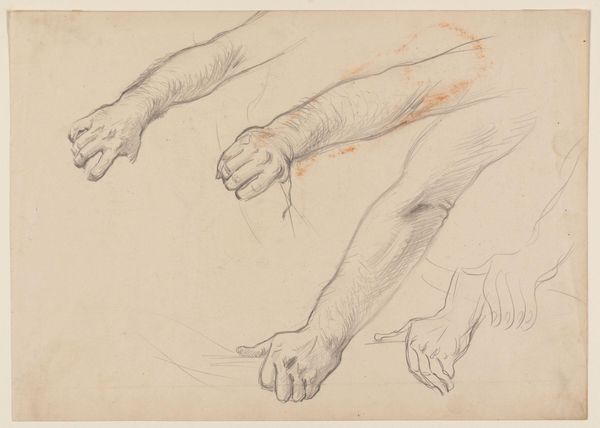
drawing, pencil
#
portrait
#
drawing
#
amateur sketch
#
light pencil work
#
pencil sketch
#
figuration
#
personal sketchbook
#
idea generation sketch
#
pen-ink sketch
#
pencil
#
sketchbook drawing
#
pencil work
#
sketchbook art
#
initial sketch
Copyright: Rijks Museum: Open Domain
Editor: So this is "Twee handen," or "Two Hands," a pencil drawing from the late 19th or early 20th century by Bramine Hubrecht. It seems like a preliminary sketch, almost an exercise in capturing the hand's form. What do you see in this piece, particularly from a formal perspective? Curator: The drawing exhibits a fascinating exploration of line and form. The artist appears focused on understanding the anatomical structure of the hand, evident in the repetitive rendering. Note how the varying pressure of the pencil creates depth, suggesting volume through purely tonal shifts rather than reliance on contour. It's a study in the economy of means. How does the negative space around the hands influence your perception of the drawing? Editor: It makes them feel somewhat isolated, almost floating on the page, which further emphasizes the focus on pure form. The roughness of the lines, though, makes it seem more like a draft. Curator: Precisely. This rawness allows us to appreciate the artist's process. Observe how the hatch marks indicate the planes of the hand. The composition, with the hands arranged in a seemingly casual manner, reveals a deliberate intention to examine the subject from multiple angles. Editor: That's true. It's not just about one perfect representation, but rather about understanding the object through a series of studies. I was focused on what the hand represented, rather than just how the pencil worked here. Curator: Indeed, it reminds us that sometimes the most compelling aspect of art resides in its structure and composition, offering insights beyond mere representation. The lack of contextualization removes emotional elements. Editor: Right. I see how concentrating on these fundamental elements enables us to value the craftsmanship, even in what looks like a preliminary work.
Comments
No comments
Be the first to comment and join the conversation on the ultimate creative platform.
